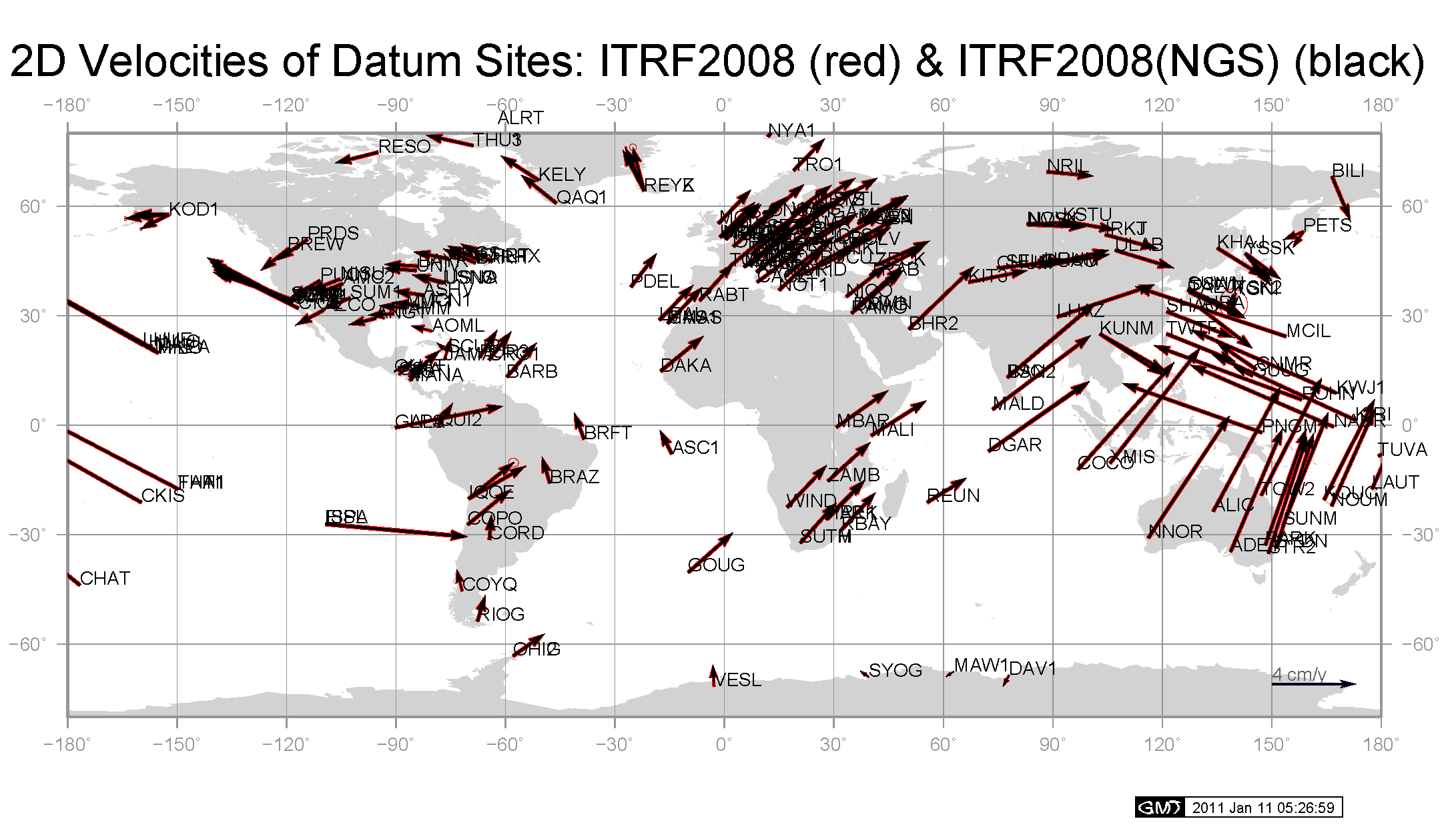Preliminary Summary of the Reanalysis of GPS Data for MYCS1 Campaign
Results shown on this page are preliminary. Positional and velocity discontinuities may be missing. This page is to provide information about the status of the reprocessing and for users to potentially provide feedback about instances where known discontinuities are missing from the current results.
CATREF stacking of NGS Global and CORS SINEX files
Our main use of CATREF software is to stack the time series of reprocessed weekly SINEX files to obtain regularized coordinates and secular velocities for CORS stations, in a global framework aligned to the current International Terrestrial Reference Frame (ITRF)--i.e., ITRF2008. Stacking of the SINEX files happens in three main steps:
- The first step is the determination of weekly Helmert parameters that align each weekly SINEX file to the stacked frame while miminizing aliasing effects due to local non-linear motions. This first step is achieved by determining the weekly Helmerts over an optimal sampling of the globally distributed sites.
- The second step is the application of the weekly Helmerts to the full network to obtain regularized coordinates and velocities for the sites in the full network.
- Finally, the stacked TRF is aligned with ITRF2008.
Step 1. Mitigating aliasing effects due to local non-linear motions
Subnetworks used in determining the set of weekly Helmert parameters
Global stacking
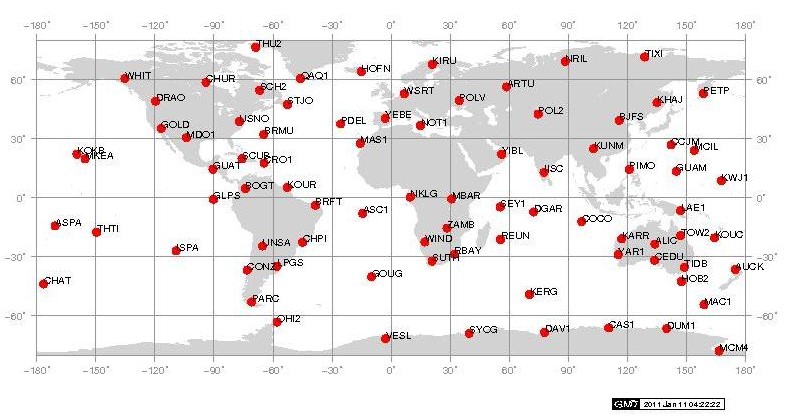
NCN stacking
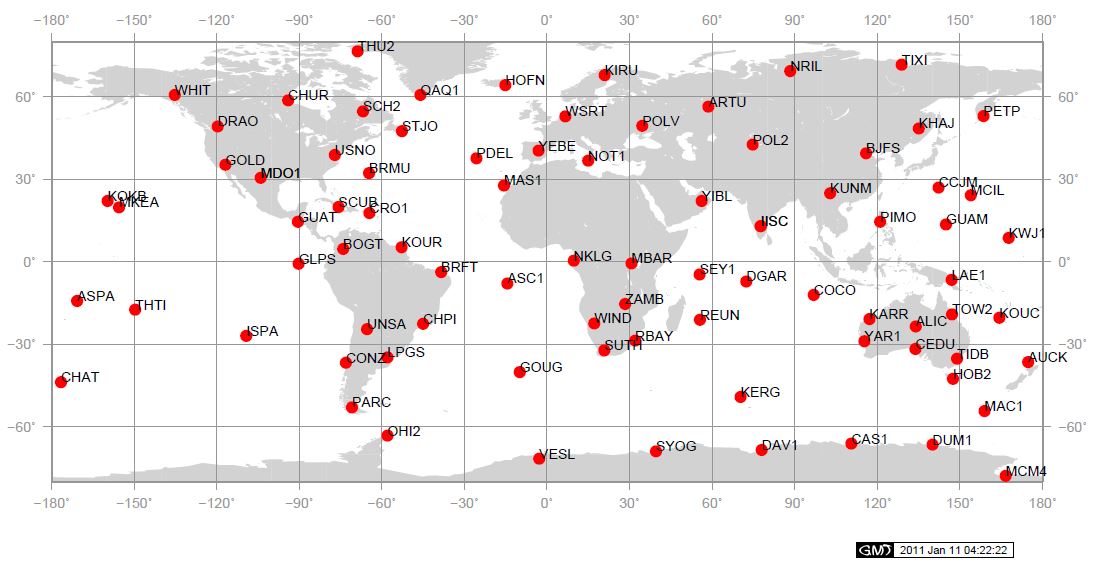
Time-series of the weighted-average of the coordinate residuals taken over the subnetwork
Global stacking
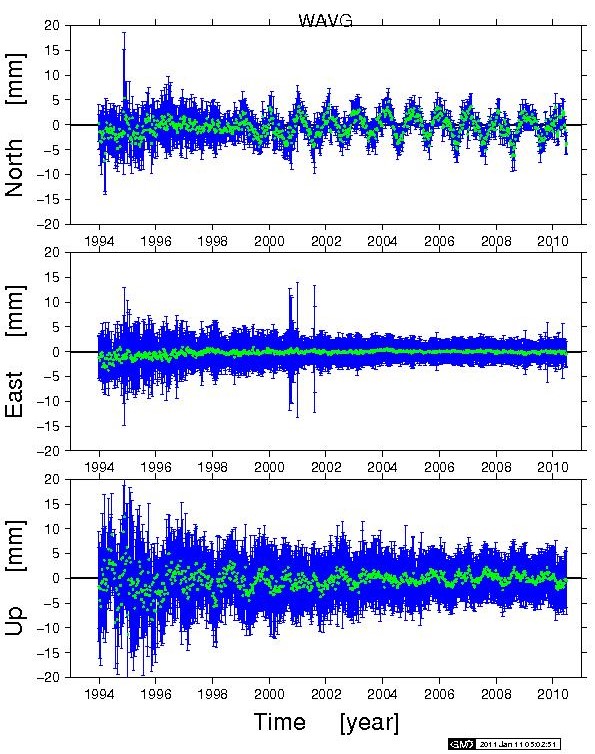
NCN stacking
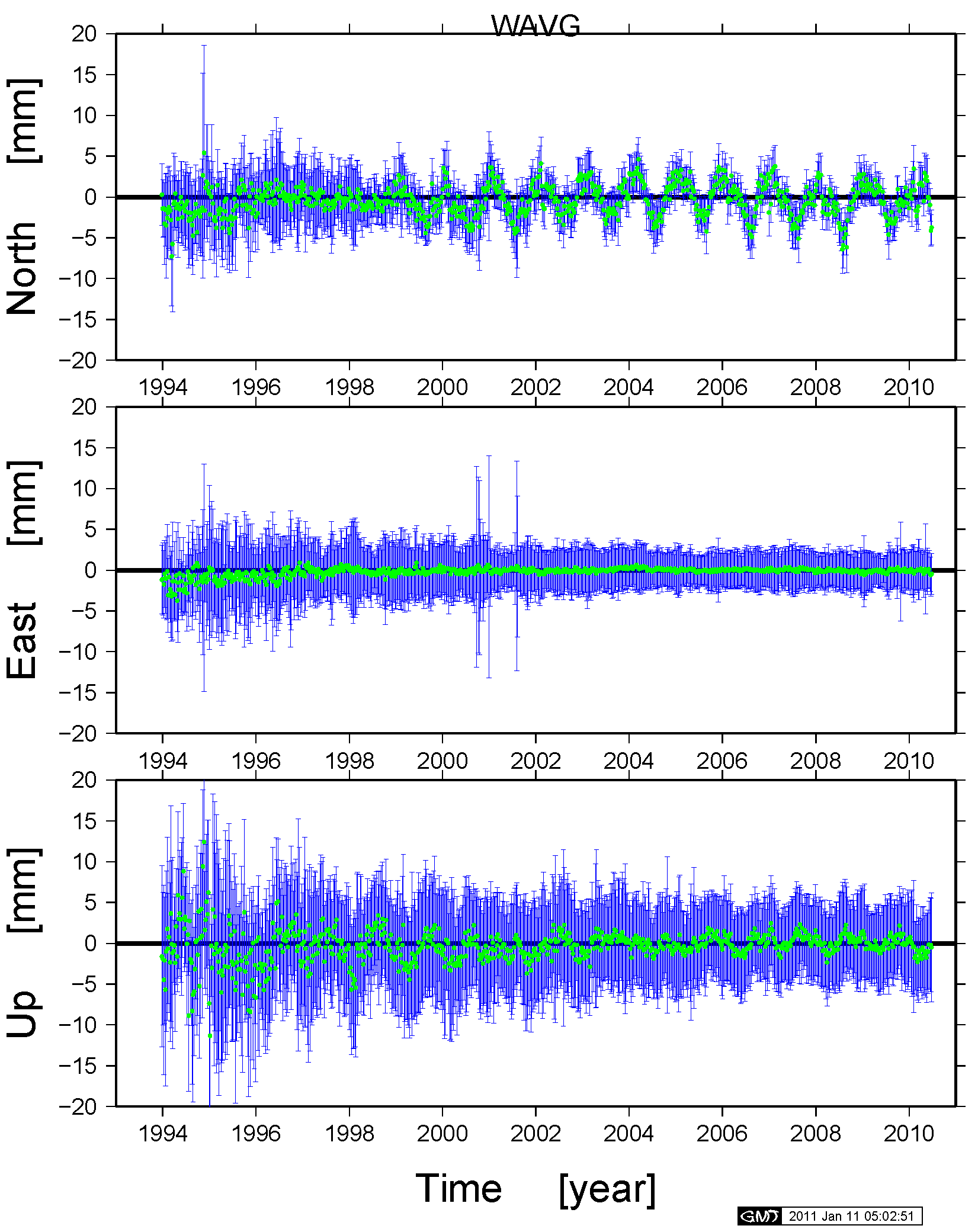
Time-series of weekly Helmert parameters derived by stacking the subnetwork
Translations in the X, Y and Z directions are denoted with Tx, Ty and Tz. Rotations about X, Y and Z are denoted with Rx, Ry and Rz. The change in scale, i.e., dS, is assumed to be zero for this step.
Global stacking
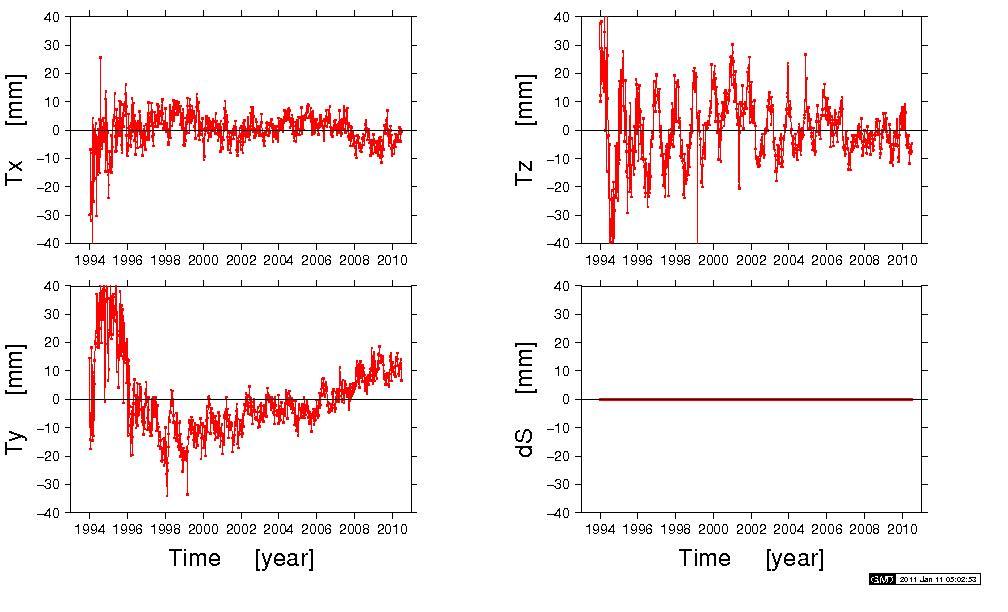
NCN stacking
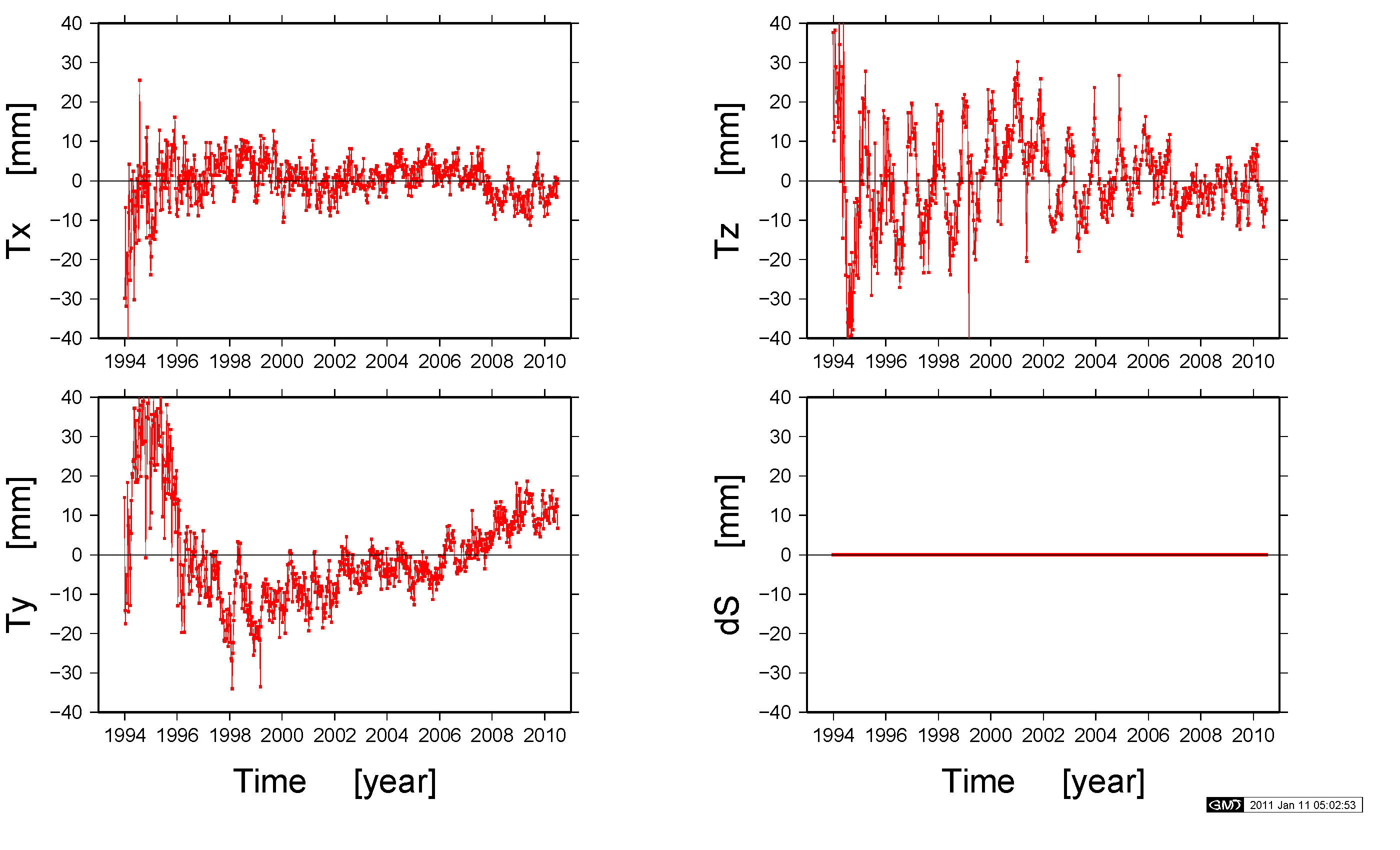
Global stacking
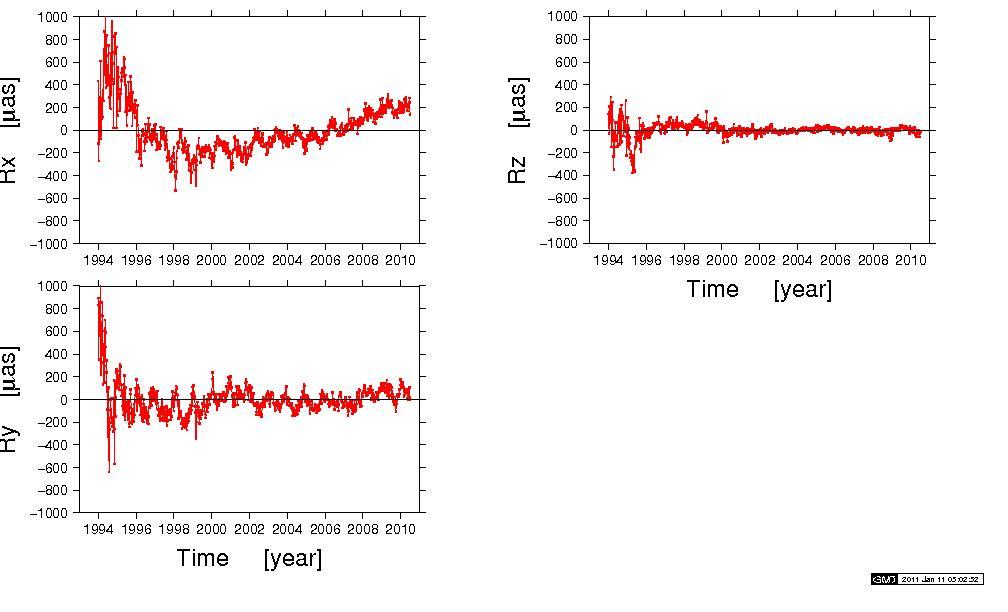
NCN stacking
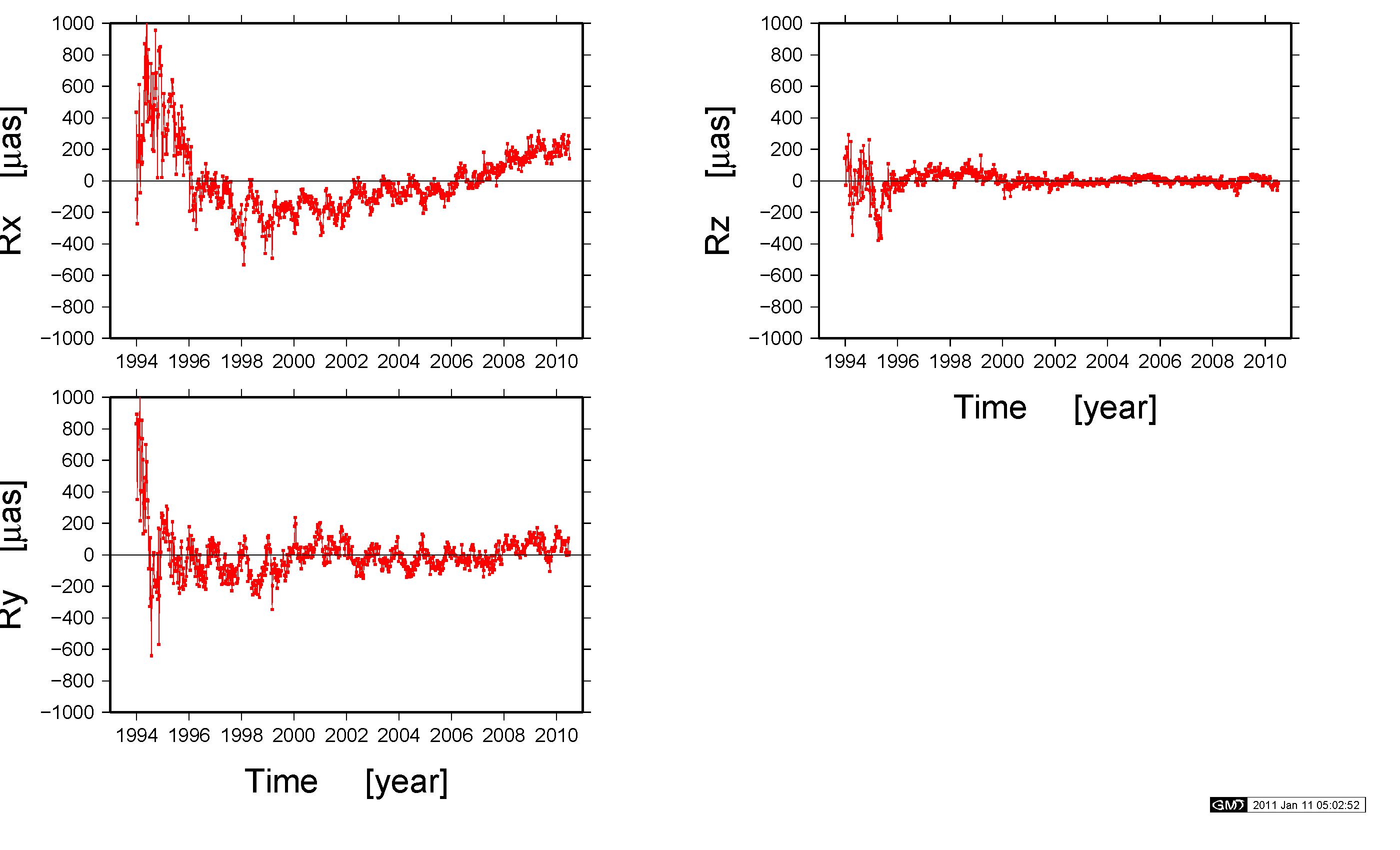
Step 2. Stacking of NGS TRF using Helmerts derived in Step 1
Sites common to ITRF2008 and the NGS SINEX files
Global stacking
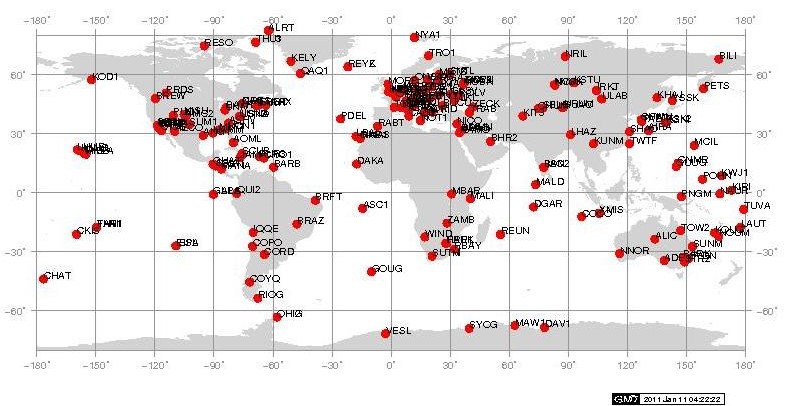
NCN stacking
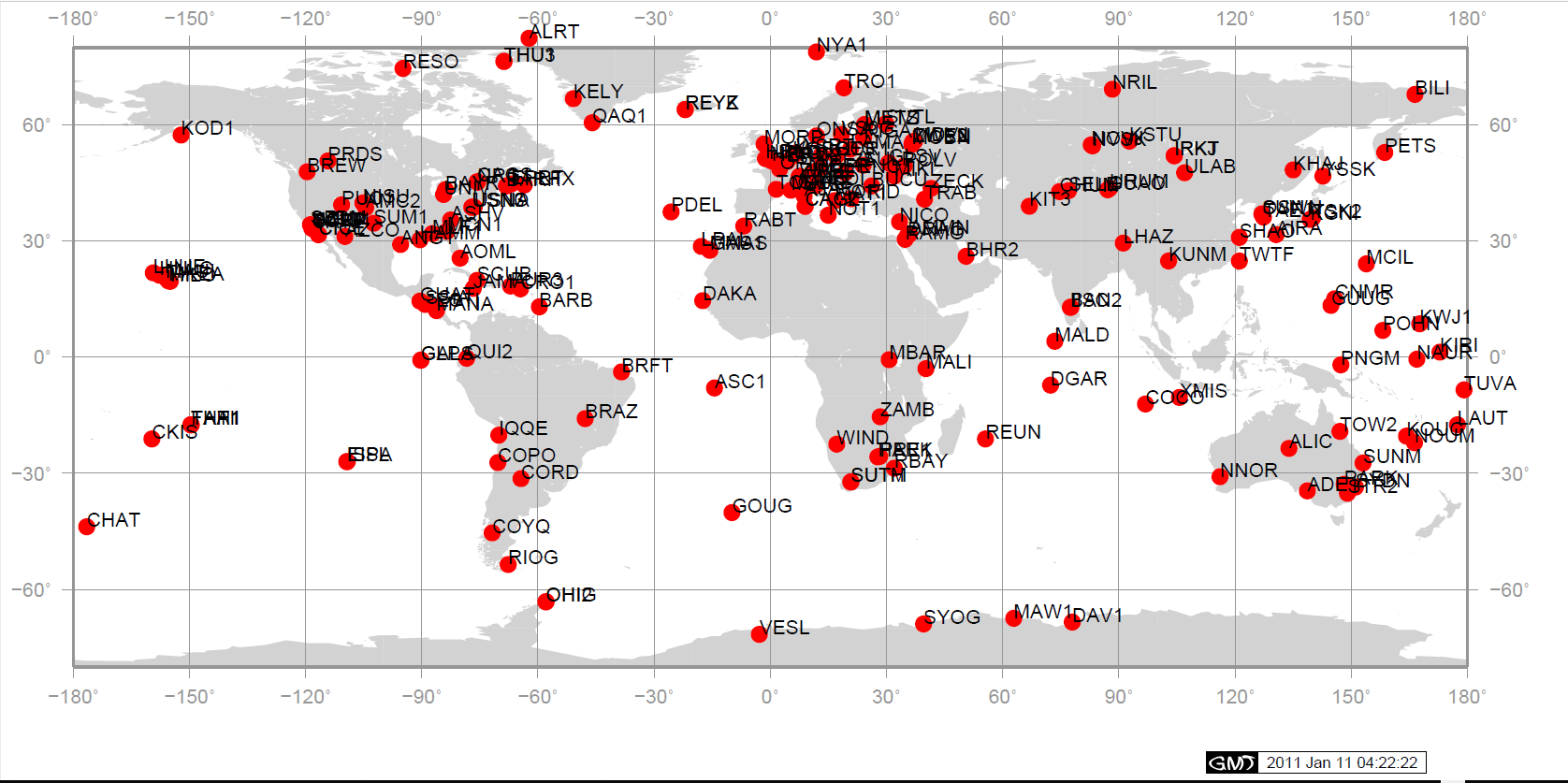
Time-series of the weighted-average of the coordinate residuals taken over the ITRF2008 sites
Global stacking
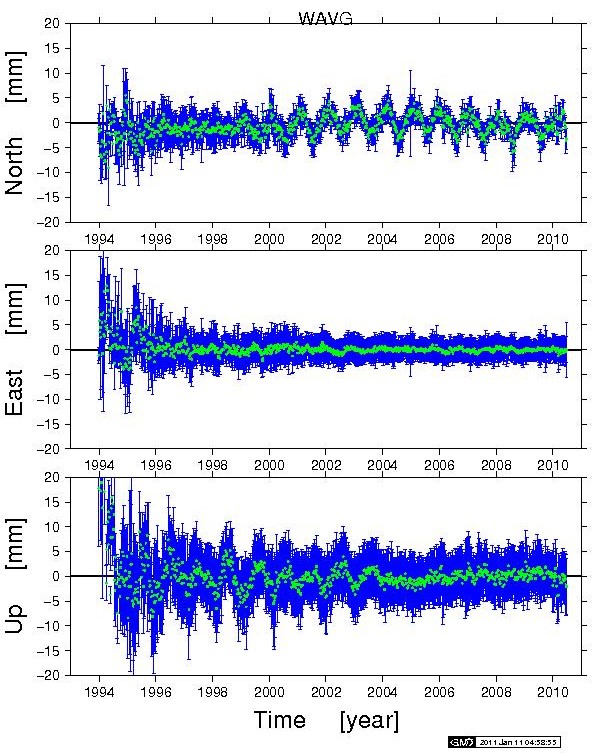
NCN stacking
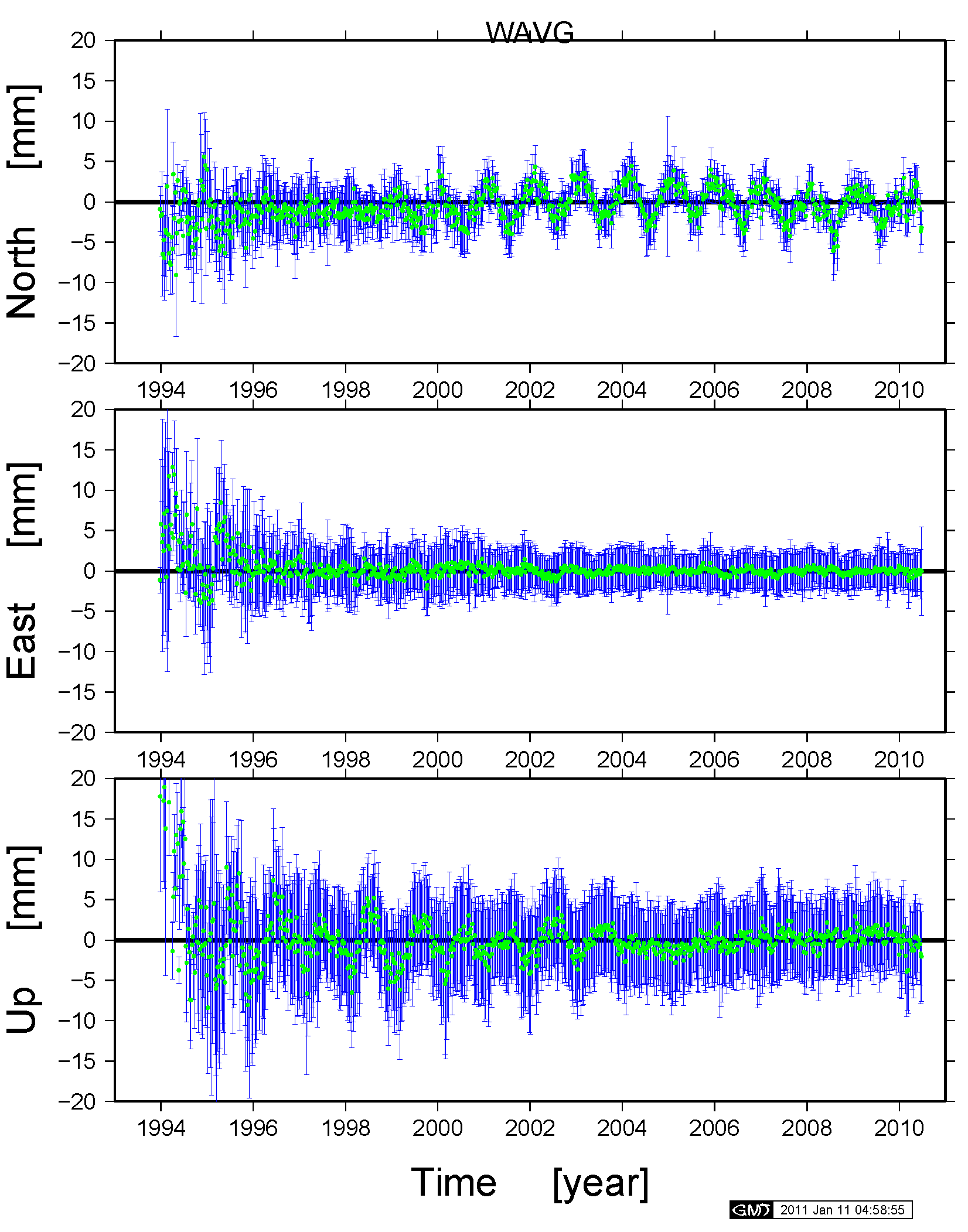
Step 3. Obtaining ITRF2008(NGS), i.e., Alignment of NGS TRF with ITRF2008
2D velocities in ITRF2008 and those derived from the NGS reprocessing and stacking (after aligning the stacked NGS solut ion to ITRF2008)
Global stacking
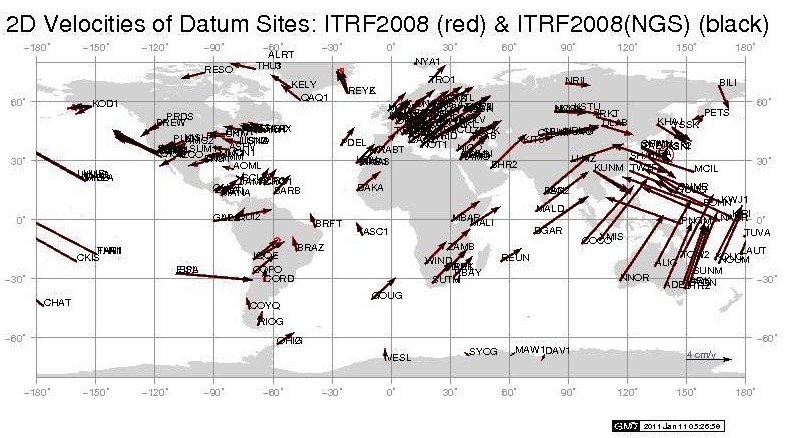
NCN stacking
